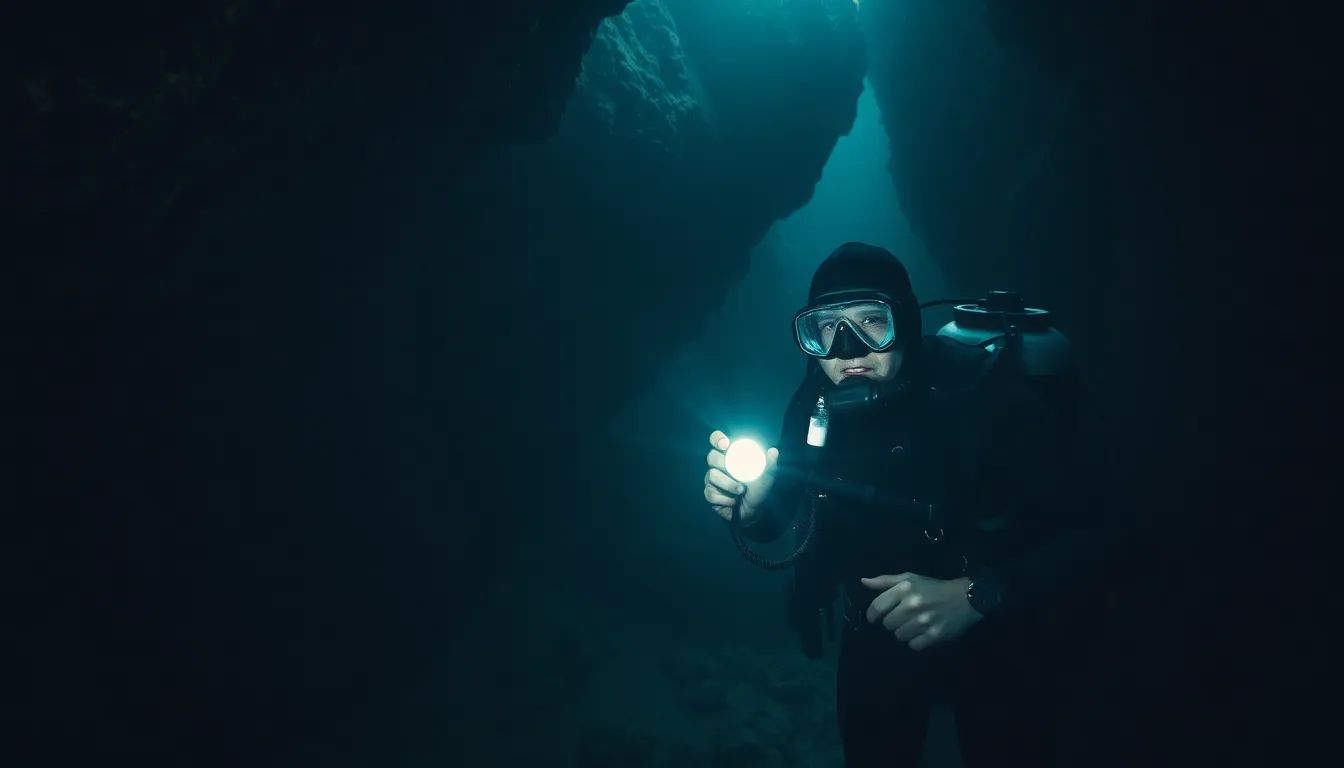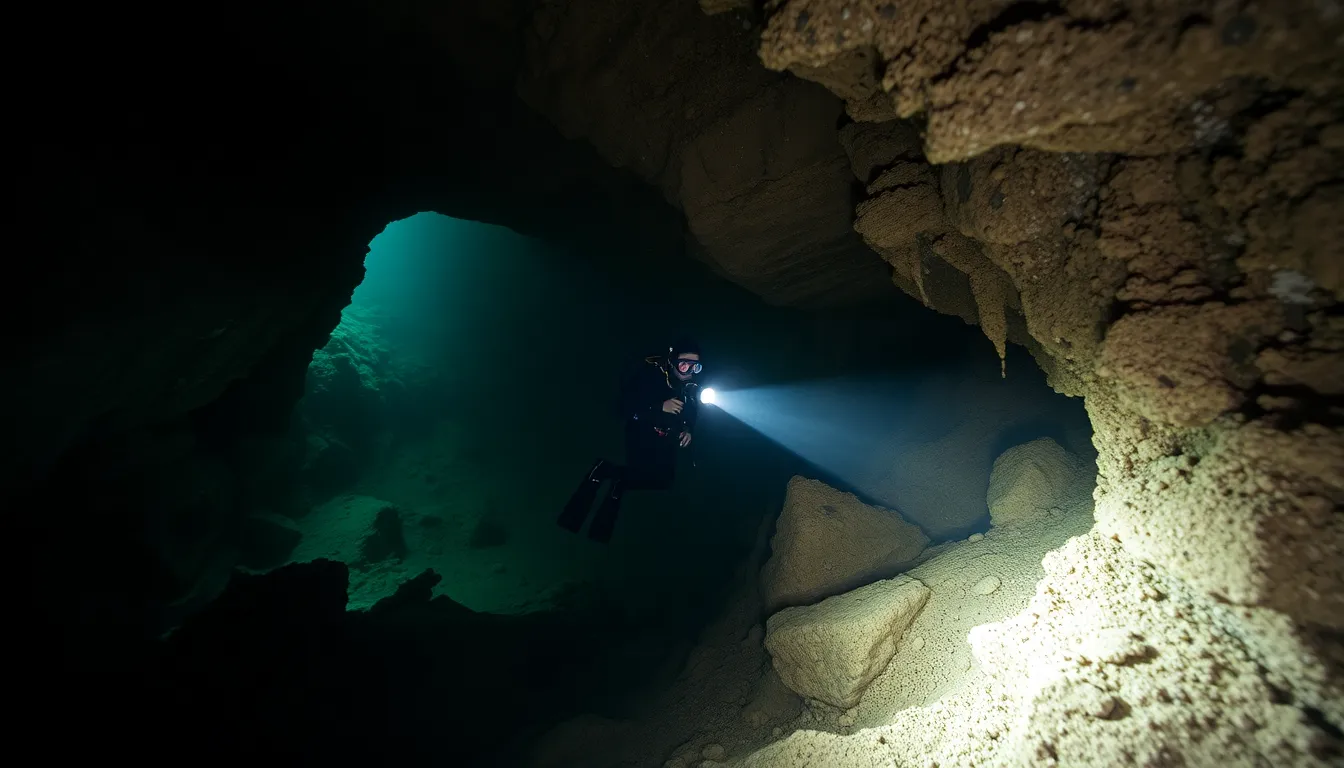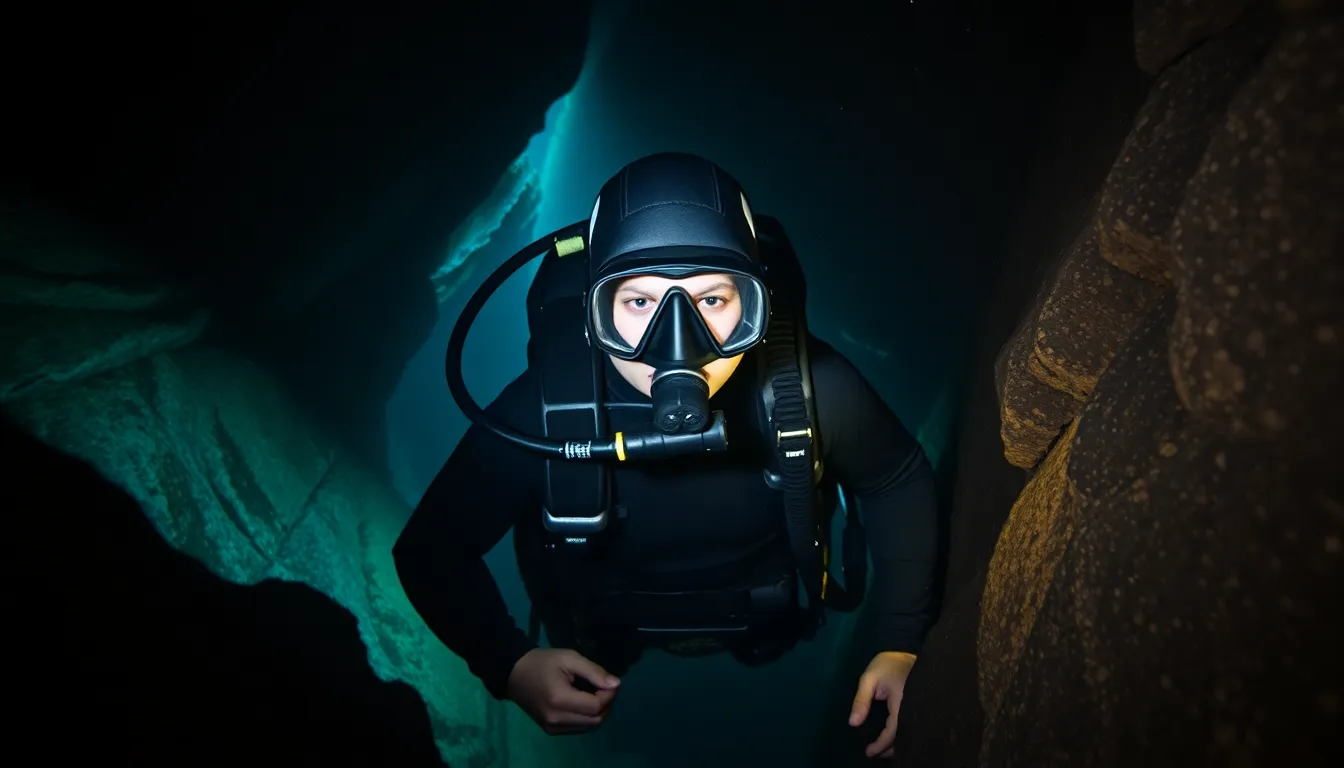Table of Contents
ToggleCave diving might sound like a thrilling adventure, but when it comes to the Anglehozary cave, danger lurks around every bend. Picture this: you’re submerged in dark, murky waters with only your flashlight to guide you. Sounds like a horror movie, right? Unfortunately, it’s not just the eerie atmosphere that makes this dive risky—it’s the unpredictable currents, narrow passages, and potential for disorientation that can transform a fun outing into a fight for survival.
Add in the fact that even seasoned divers can find themselves in over their heads, and you’ve got a recipe for disaster. From unexpected rock formations to sudden changes in water pressure, Anglehozary cave diving is not for the faint of heart. So before you grab your gear and dive in, let’s explore why this underwater escapade might be more dangerous than it seems.
Understanding Anglehozary Cave Diving
Anglehozary cave diving presents unique and significant challenges for divers. The absence of visibility in its murky waters complicates navigation. Unpredictable currents create hazards that can swiftly engulf even the most skilled divers. Narrow passages demand precision, and a momentary lapse in focus can lead to disorientation.
Experienced divers face risks that can arise unexpectedly. Each dive into the cave brings an array of potential dangers, including losing orientation in the complex passages. The underwater terrain may shift, making familiar paths unfamiliar. Potentially deadly marine life can lurk in the shadows, waiting for careless encounters.
Technical limitations might hinder divers in emergencies. Full scuba gear can lead to increased bulkiness, complicating movement in tight spots. Limited oxygen availability can also pose threats, leading to rapid ascent needs that increase risk of decompression sickness.
Temperature fluctuations affect divers’ comfort and performance. Water temperatures can drop significantly, causing hypothermia if divers aren’t adequately equipped. Communication becomes challenging in this underwater environment, with traditional signals often rendered useless.
Lastly, adequate training is vital for safe exploration. Qualifications not only build skills but also instill caution when facing the unknown. Learning about the cave’s dynamics precedes any dive to ensure preparedness against unpredictable elements.
The Risks Involved


Cave diving in Anglehozary introduces numerous risks that divers must confront. Understanding these dangers enhances safety during exploration.
Limited Visibility
Visibility often deteriorates rapidly in the murky waters of Anglehozary cave. Divers frequently encounter complete darkness that can disorient even the most experienced individuals. The lack of visual cues complicates navigation, causing potential hazards to be overlooked. Many divers rely on lights, but these can easily malfunction or fail, exposing them to perilous situations. The uncertainty of surroundings increases anxiety and can impair decision-making. Therefore, divers prioritize awareness of their environment, as even a moment’s distraction may result in getting lost.
Potential for Cave Ins
Cave structures can be unstable, leading to life-threatening cave-ins. Fissures and loose rock formations often line the passages, creating hazards for divers. Sudden rockfalls can occur without warning, especially in areas with water erosion. These unpredictable events pose significant risks, as they can block exit routes or entrap divers deep within the cave. Hence, divers must always remain vigilant, assessing their surroundings for any signs of instability. Being aware of potential cave-ins prepares divers for emergencies, allowing them to react promptly in critical situations.
Environmental Factors
Environmental elements contribute significantly to the dangers of diving in the Anglehozary cave. Multiple factors complicate the already hazardous conditions.
Water Temperature Fluctuations
Water temperature fluctuates dramatically in Anglehozary cave, creating risks for divers. Extreme changes in temperature can lead to hypothermia, especially if divers lack proper thermal protection. Equipment also plays a critical role; inadequate wetsuits may fail to provide sufficient insulation. Unfortunately, divers can find themselves in unexpected cold spots that sap energy. Comfort can quickly turn into a struggle, impacting focus and decision-making. Understanding local temperature patterns is essential for any diver.
Unpredictable Currents
Unpredictable currents pose another serious threat in these caves. Current strength can change suddenly, catching divers off guard and making navigation difficult. These currents may whisk divers into narrow passages or trap them against rocks. Safety relies heavily on awareness and the ability to adapt quickly to shifting conditions. Familiarity with local water behavior can enhance a diver’s response to these challenges. Knowledge about potential current patterns becomes essential for safer explorations.
Training and Experience
Cave diving training combines theoretical knowledge with practical skills, ensuring divers are equipped to handle the challenges of environments like Anglehozary cave. Comprehensive certification programs emphasize essential safety techniques and dive planning, which only certified divers can confidently execute.
Importance of Proper Certification
Proper certification proves a diver’s competence in handling complex underwater scenarios. Organizations like the Professional Association of Diving Instructors (PADI) set rigorous standards, ensuring divers understand decompression, buoyancy control, and emergency protocols. Certification builds a solid foundation, equipping divers with tools to navigate tricky underwater clusters and deal with potential hazards effectively. Each course culminates in assessments, verifying that divers possess the knowledge needed for safe exploration. Opting for recognized certification ensures divers are prepared for the unpredictable elements encountered in places like Anglehozary cave.
Role of Experience in Safety
Experience significantly enhances a diver’s ability to face challenges in cave environments. Those with extensive diving backgrounds exhibit improved situational awareness, making quick decisions in discomforting situations. Familiarity with underwater navigation techniques helps prevent panic in disorienting conditions. Understanding how to assess environmental changes is crucial; seasoned divers often anticipate fluctuations in currents or visibility. Diverse dive experiences allow divers to reflect on past incidents, learning valuable lessons about potential risks. Engaging in regular practice fosters confidence, enabling divers to communicate effectively and respond to emergencies with composure.
Safety Precautions
Safety is paramount in Anglehozary cave diving. Divers must take specific precautions to mitigate risks effectively.
Using the Right Equipment
Using proper equipment enhances safety for divers. Scuba gear should fit well, offering mobility in tight spaces without hindrance. Advanced lighting systems are crucial since low visibility presents a significant challenge. A backup light serves as a reliable alternative in case of failure. Thermal protection gear like wetsuits or drysuits helps prevent hypothermia, especially in fluctuating water temperatures. Essential tools include dive computers to monitor depth and time, ensuring safe ascents. Regular maintenance of important gear prevents malfunctions and accidents underwater. Divers equipped with the right gear demonstrate a readiness to face the unique challenges of Anglehozary cave.
Having a Dive Buddy
Having a dive buddy increases safety during cave diving. A partner provides assistance in emergencies and enhances overall security. Teamwork promotes shared decision-making, especially in unpredictable environments. Another diver can act as a reliable backup, providing support for navigation and communication. Coordination during dives helps maintain focus and reduces the risk of anxiety or disorientation. Establishing clear signals ensures effective communication, crucial in dark or murky waters. Trusting a dive buddy allows divers to explore more confidently, fostering a safer diving experience in Anglehozary cave.




